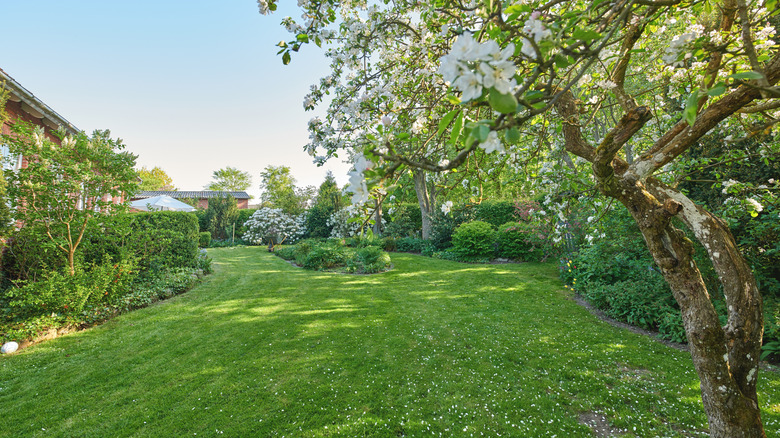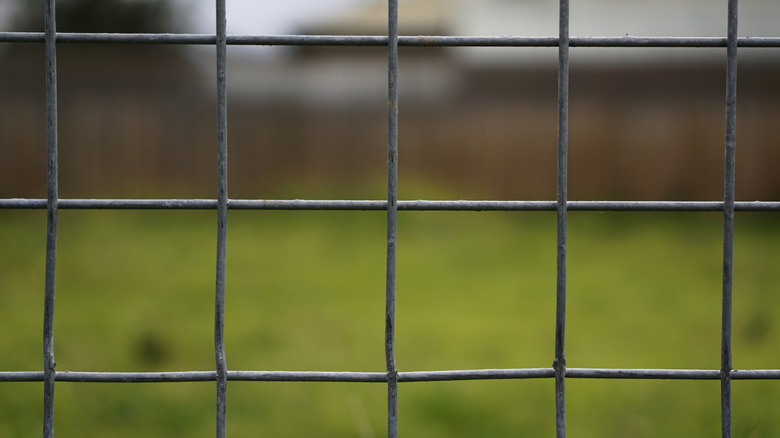A Sleek Wire Fence Design To Consider For Your Backyard
We may receive a commission on purchases made from links.
If your current fence resembles that of a haunted house, it may be time to put a new one up. While considering the options to build the perfect fence for your yard, you might realize that the typical chain-link fence just doesn't do it for you. Perhaps you want something sleek, sharp, and as attractive as a newly-tailored suit. After all, an eye-catching fence can not only increase your home's curb appeal, but it can also increase the property value.
Fences serve a functional purpose to deter and block intruders and establish visual boundaries for property lines, but they can also add a decorative touch, giving a home more character. One material that works great for adding style and function is hog wire fencing. Hog wire fencing is practical, versatile, and budget-friendly. It provides a solid and stable fence structure (it doesn't warp or bend easily) and can be used for various applications such as deck railing, garden enclosures, and pet enclosures. It's also typically cheaper per linear foot when compared to chain-link fences.
Unlike wire fencing, hog wire has a grid-like mesh layout, with small squares (instead of diamonds) that are typically around 16 square inches each. It's often made of aluminum or galvanized steel, primed with zinc to prevent rusting, and then sprayed with a final coating, such as PVC. Having the fencing installed by a contractor can range anywhere from $35 to $50 per square foot of fence, depending on your location and the size of the fence. However, you can always save money by putting on your DIY hat and building the fence yourself with some wooden fence posts.
How to install a DIY modern hog wire fence
Making a list of all the required tools and materials, in addition to taking accurate measurements, is crucial for the success of this DIY project. You'll need lumber for the fence posts, a post hole digger, a staple gun, wire cutters, gravel, concrete, a level, and a pencil. Your local hardware store can cut the number for you if you don't have a table or a circular saw.
Once you've determined your lumber and fencing measurements, dig the holes for the posts. After this, pour in the gravel until it's about 4 to 8 inches high, and place the posts inside to ensure they're sturdy and level. The next step is securing the posts by adding mixed concrete into the holes around them. Once the concrete cures (in 1-2 days), it's time to measure and cut your hog panels. After this step, secure the panels tautly onto the posts using a staple gun with heavy-duty staples. Then, install your gate along with any add-ons you prefer.
An easy way to modernize your hog wire fence is by painting the posts dark colors, such as black or dark blue. You can also completely nix the posts, swapping them out for metal posts instead. This also goes for any caps you may want to add to the posts. Take the accents further by incorporating decorative climbing plants, like Star Jasmine, Clematis, or Wisteria, and a small raised garden bed at the front of the fence can add extra flair.

